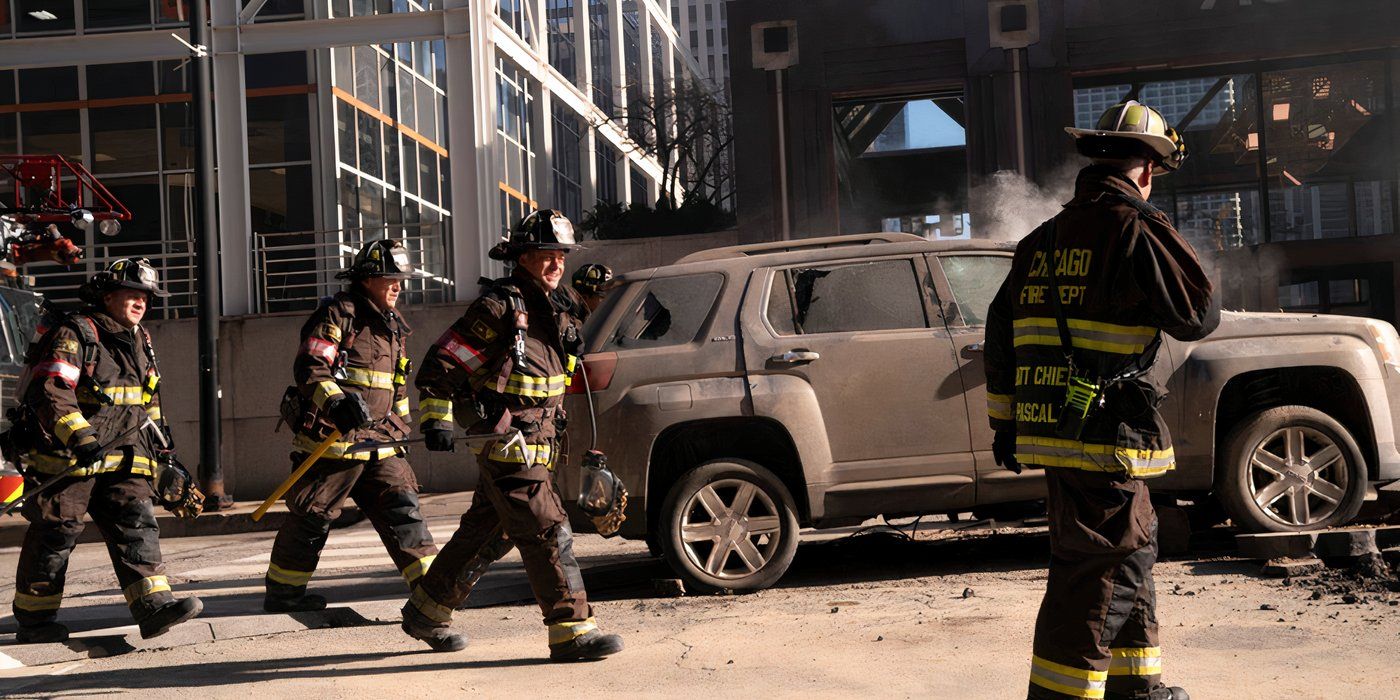
Television is crowded. From superhero spinoffs to true crime documentaries, viewers in 2025 are overwhelmed with options. And yet, Chicago Fire — a show that began in 2012 with a fairly simple premise — remains one of NBC’s most consistent and compelling performers. The question isn’t just how the show has survived for 14 seasons. The better question is: why does it still work so well?
The answer lies in Chicago Fire’s perfect balance between heart, heat, and high-stakes storytelling — a formula that, remarkably, still feels fresh over a decade later.
Simplicity Is Strength
At its core, Chicago Fire is about firefighters, paramedics, and the people they save. That sounds basic, but in a landscape of twist-heavy thrillers and multi-layered antihero dramas, the show’s straightforward premise is one of its greatest strengths.
Each episode delivers high-octane rescues, emotionally grounded character moments, and a dependable rhythm: alarm, action, aftermath. And yet, it never feels repetitive. That’s because the stakes are always personal. A collapsing building isn’t just a cool set piece — it’s a test of trust. A house fire isn’t just smoke and flames — it’s an opportunity to show who steps up when seconds matter.
The show’s formula isn’t stale — it’s stable. And in an era where shows get canceled mid-season and plotlines spiral into chaos, Chicago Fire’s steady heartbeat is a welcome comfort.
Characters First, Always
No procedural survives 14 seasons without characters that viewers care about. And Chicago Fire has built one of the most loyal ensemble casts on network television.
Whether it’s Casey’s quiet sense of duty, Severide’s fireground instinct, or Boden’s commanding leadership, each character brings more than a job title to the screen. Even when actors leave — as Jesse Spencer did, or Kara Killmer more recently — the emotional groundwork they laid continues to ripple through the firehouse.
Season 14 has seen this formula play out again with the rise of Cruz, the evolution of Violet, and the integration of new faces like Lyla Novak. Each new dynamic doesn’t replace the old — it adds to the legacy.
That’s the secret: the characters are treated like real people with real histories, and the show never resets. Actions have consequences. Grief lingers. Growth matters.
Emotional Stakes > Plot Twists
What separates Chicago Fire from other procedurals is its commitment to emotional storytelling. Sure, the rescues are thrilling — dangling window washers, warehouse explosions, submerged vehicles — but the emotional fallout afterward is what gives the action weight.
This season, Cruz’s leadership challenges, Violet’s emotional recalibration, and Gallo’s internal crisis have provided moments of intense personal reflection. These stories aren’t just filler between fires — they are the fire. And it’s those quiet conversations in the locker room, those missed calls home, those rooftop reflections that keep viewers coming back.
In Chicago Fire, the call may be over, but the impact lasts. And that’s good storytelling.
Episodic with a Serial Soul
One of the show’s biggest strengths is how it balances episodic content with long-running arcs. Viewers can tune in for a single episode and still get a satisfying story, but longtime fans are rewarded with deeper context — character history, relationships, trauma, growth.
Brett’s exit wasn’t just a goodbye — it was the end of a journey that began seasons ago. Violet’s rise as a leader didn’t happen overnight. Boden’s role as the heart of 51 has evolved with every tough decision, every funeral speech, every scene of quiet counsel.
This layered continuity gives Chicago Fire the richness of a prestige drama, without sacrificing accessibility. It’s a rare balance that few shows manage to achieve.
Firefighting as a Mirror of Society
Chicago Fire doesn’t often wave a political banner, but it never shies away from real issues. Over the years, it’s tackled racism in the ranks, PTSD among first responders, opioid addiction, community mistrust, and gender dynamics — all through the lens of firehouse life.
In Season 14, a story about budget cuts and city politics affecting firehouse staffing hit especially hard. It wasn’t a flashy arc. It was realistic — and frustrating — and it resonated because these characters aren’t superheroes. They’re city employees fighting to do good in a flawed system.
By staying grounded, the show earns its emotional beats. It reflects the struggles of real-world first responders without turning them into caricatures.
A Legacy Built to Last
It’s not easy to keep a show fresh after 300 episodes. Many procedurals coast. Some reinvent too much. But Chicago Fire has found a rhythm — and it plays it like a drumline. Solid. Dependable. Occasionally surprising. Always powerful.
That’s why it still wins. Because it never forgets the people beneath the uniforms. Because it understands that action means more when hearts are on the line. Because it keeps evolving, without losing the spark that started it all.
Final Thoughts
In 2025, Chicago Fire is more than just a show — it’s a blueprint. A model for how to build longevity, loyalty, and layered storytelling in a format that’s often dismissed as formulaic. It’s a procedural, yes. But it’s also a family drama, a workplace story, and a love letter to everyday heroes.
Fourteen seasons in, Firehouse 51 is still open for business. And it doesn’t look like it’s closing anytime soon.

